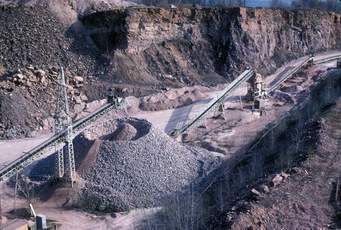Chiefs looking for resource revenue sharing in aggregate being removed from traditional lands

By Joey Krackle
The Southeastern Regional Grand Chief is calling for an equal share of riches extracted from the land.
Southeastern Regional Grand Chief Jim Bob Marsden says the land area between Peterborough and Kaladar is recommended for use in a newly released report. The Ministry of Northern Development and Mines highlights the area as a potential source of aggregate called trap rock. That’s crushed rock used in asphalt and roofing tiles.
Southeastern Regional Grand Chief Marsden asserts that the aggregate should be a source of revenue for The Anishinabek Nation.
Currently, First Nations receive no money from aggregate extracted from their traditional lands. The current value of the aggregate industry in Ontario exceeds $2 billion per year.
Anishinabek citizens have inherent rights to their traditional lands and should receive an equitable share from the royalties and other proceeds from the aggregate industry states Southeastern Regional Grand Chief Marsden. “We are determined to get an equitable share of royalties for the aggregate extracted from our traditional lands.”
The ministry’s report projects that aggregate consumption requirements will rise to 186 million tonnes over the next 20 years, 13% higher than in the past 20 years.
There is also a forecast for a 7% growth in the mineral wool market. The primary ingredient for mineral wool is trap rock.
The Ontario government has already agreed to changes to the Aggregate Resources Act. Just in August of last year, Ontario committed to, “Working together to identify and address common priorities and issues, that will include but not be limited to the treaty, relationship, resource benefits, and revenue sharing and jurisdictional matters involving First Nations and Ontario.”
With changes coming to the Aggregate act, Southeastern Regional Grand Chief Marsden wants a seat at the table making the decisions. “The Anishinabek Nation wishes to be compensated for aggregate resources extracted from these new sites on our traditional lands.
Our Leadership is prepared to play a meaningful role in bringing forward recommended regulatory and legislative changes to improve the Aggregate Resources Act.“
Southeastern Regional Grand Chief Marsden also stands firm against any mining under our Great Lakes.
The Anishinabek Leadership emphasizes that they did not surrender their lake beds when they signed their treaties and reminds the Ontario government of its Section 35 rights to the lakebeds under the Great Lakes.


